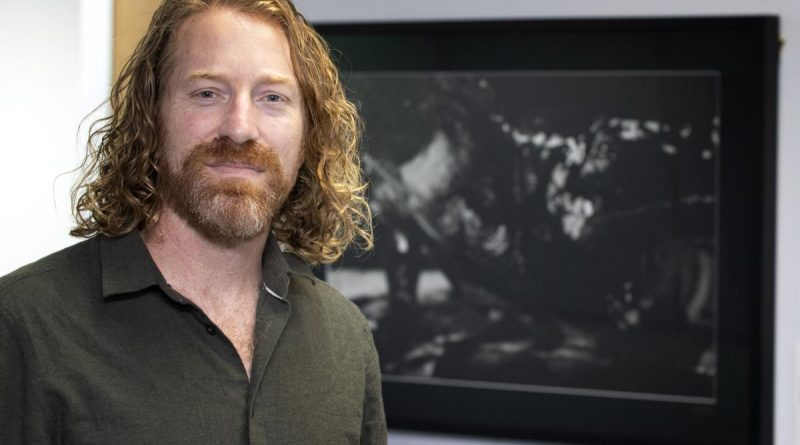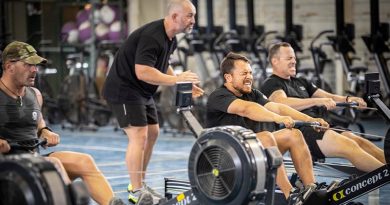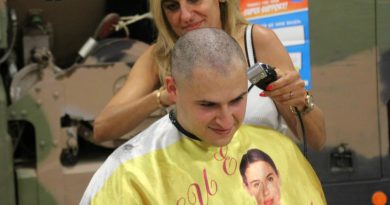Exhibition a voice for veterans

Death by “a thousand cuts” was how veteran, and recently retired Army signals officer, Mike Armstrong described his PTSD.
CAPTION: Retired Australian Army officer and artist Mike Armstrong stands in front of a photograph he produced as part of a photographic exhibition titled ‘Voices of Veterans’ at the National Press Gallery in Canberra. Story by Sergeant Matthew Bickerton.
He said trauma could be caused by a single event or many smaller experiences that accumulated over time – which is what happened to him.
“It can be a lifetime of events. That’s why it’s difficult to identify and is why it was hard for me to see it in myself because I was looking for a single large event,” Mr Armstrong said.
“I’ve had PTSD [compounded] for 15 years, through multiple deployments.”
Mr Armstrong is an award-winning artist and PTSD awareness advocate who’s produced a photographic exhibition that confronts the reality of life with trauma.
Titled Voices of Veterans, the exhibition was produced with veterans to open a dialogue on what it’s like to live with PTSD.
The subjects cover their bodies in molasses as a metaphor for the visceral nature of PTSD, to represent how it manifests in the mind.
Mr Armstrong said many veterans with PTSD did not experience direct combat, and a common belief among sufferers was they didn’t deserve the moniker of PTSD because they had not suffered enough.
“What sort of mixed up idea is that?” Mr Armstrong said.
He used the example of retired chaplain Roger Marsh, who served during the height of operations in Afghanistan and was photographed for the exhibition.
Mr Marsh dealt directly with five families of fallen soldiers over two years.
“[I was] sitting on the floor telling a child that their father was not coming home, listening to them scream, and having to remain acutely aware of my surroundings in case people in their grief did something random or violent, while having to show empathy,” Mr Marsh said.
“My brain was overwhelmed, but I didn’t know it.”
Mr Armstrong said trauma took many forms.
“The resulting impact the experience had on that padre, his life and his family – is that any less important?” he said.
PTSD is self-isolating and Mr Armstrong anecdotally found individuals were not self-referring. Instead they were sitting in silence and suffering.
“A veteran who’s alone is a veteran who’s at risk,” he said.
“I despair at the idea that we’re losing these people on such a regular basis. What I’m trying to do is stop that.
“This exhibition is about trying to help connect individuals with the care they need.”
Voices of Veterans aims to create awareness as it travels across Australia, along with art workshops that Mr Armstrong runs.
“Once you have a genuine conversation about how you’re feeling, the logical next step is to ask, ‘What do I do?’,” he said.
“When you’re plugged into a community that’s already conversing, you can discover what others did to start healing.”
Mr Armstrong encourages individuals interested in exploring art as a mechanism to help connect with their stories to reach out.
“I would say to serving veterans who are struggling, life can be better. Life can be in full colour again,” he said.
For more information about the exhibition, go to Voices of Veterans.
.
.

.
.





